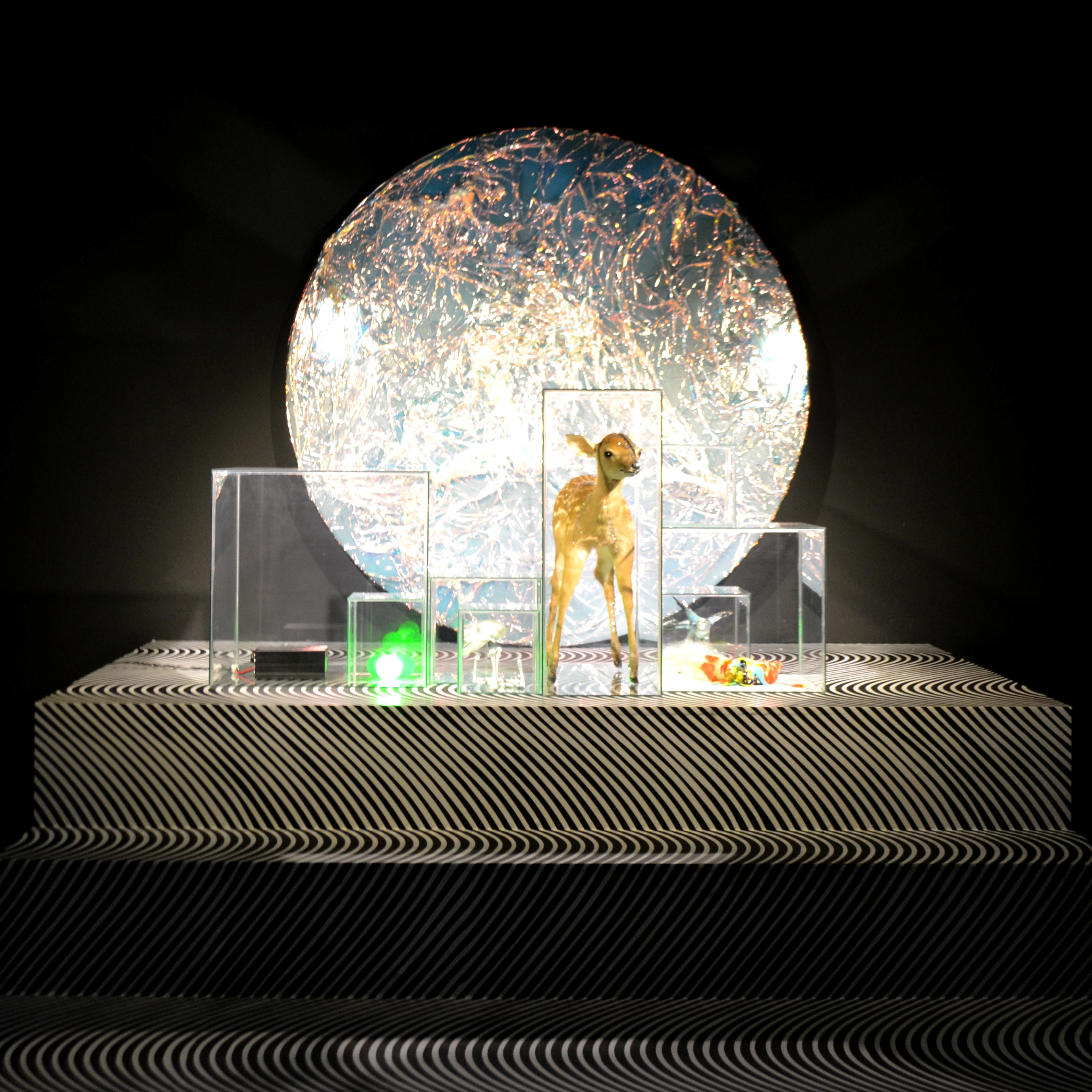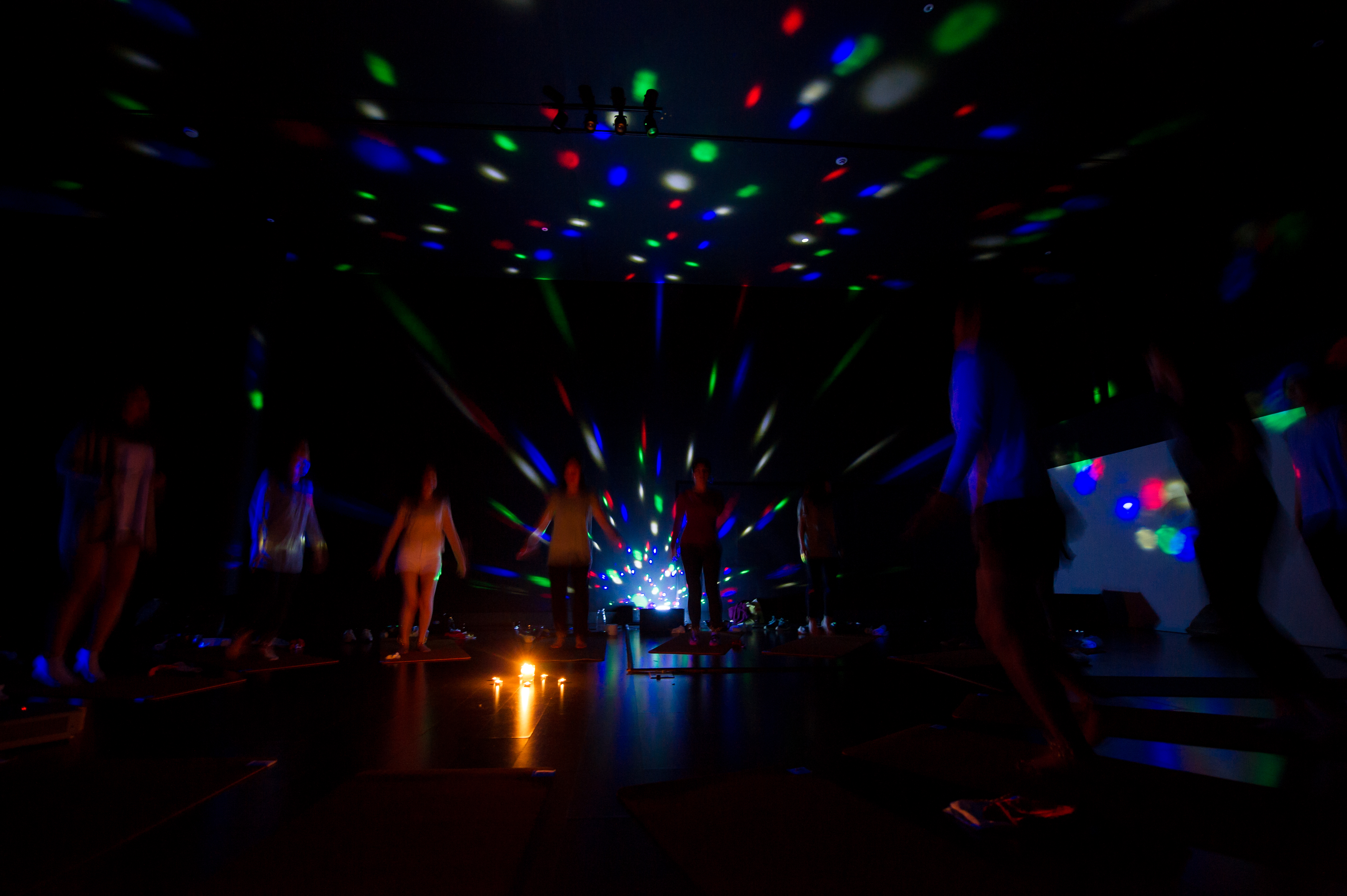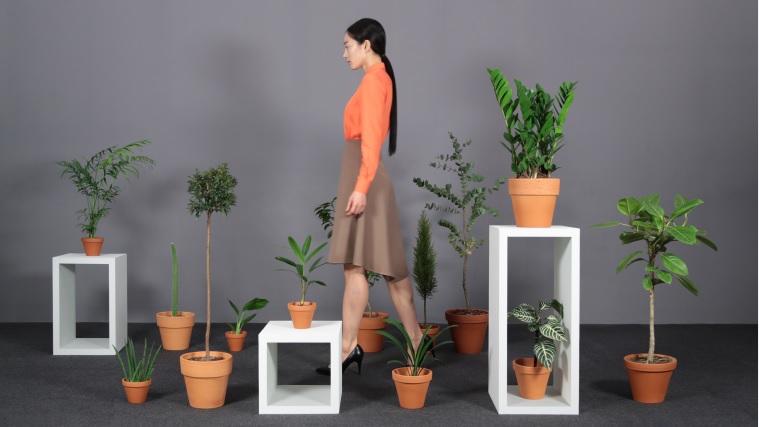
Woong Yong Kim, Shelter, 2015, mixed media, dimensions variable
- Venue
- Gallery 2
- Date
- Jan 29— Jun 28, 2015
- Curator
- Kyungwha Ahn, Sohyun Ahn, Sooyoung Lee, Yujean Rhee, Chaeyoung Lee
- Artist
- Siwon Kim+Jeewon Yoon+Soosung Lee, Woong Yong Kim, Dappertutto Studio, Seung Won Park, Yeong-Ran Suh, Jung Uk Yang, Min Oh, Sei Rhee, Mihye Cha, Eunjin Choi
- Hosted and Organized by
- Nam June Paik Art Center, Gyeonggi Cultural Foundation
Nam June Paik Art Center presents this year’s first exhibition Random Access 2015. It is expected to reaffirm the Center’s mission to establish itself as a platform in which Paik’s artistic legacy continues to inform contemporary art today and offer an opportunity to discuss a new artistic form and its meanings with a new generation of artists. Distancing themselves from any stereotypes about genre, form or content, five curators picked up two artists(teams) each, in terms of the artists’ experimentality and pioneering spirit.
The title “Random Access” originates from Paik’s work presented at his first solo exhibition Exposition of Music — Electronic Television (1963). In Paik’s Random Access, strips of audio cassette tapes taken out of the case are randomly attached to the wall and visitors can produce sounds of their own using a magnetic head. “Random Access” not only indicates the digital mode of information access, but implies such keywords as improvisation, indeterminacy, interaction and participation derived from Paik’s work.
This exhibition aims at generating new vitality against the contemporary art scene which becomes increasingly commercialized and standardized, and and beginning to talk about the artistic languages presented by artists with the audience.
- Accompanying Performances
Seung Won Park, A Desirable Chaos
29 January 2015, 5pmEunjin Choi (with Jung Uk Yang), Self Generative Theater
10, 18 April 4pm, 19 April 2pm, 4pmYeong-Ran Suh, One Spot Adventure
2, 3 May 3pm, 6pmDappertutto Studio, Dappertutto Studio
30, 31 May, 3pm
-

Siwon Kim,Untitled (x)

2015, wood, paint, dimensions variable
Siwon Kim, Jeewon Yoon and Soosung Lee talk about the requirements for a space to serve as a gallery and create one that is not ‘a space for artworks,’ showing the invisible conventions of exhibition. Kim erects a poll as tall as the height of the participants in the talk and put a board on it, so that they can set up a space. Based on the body measurement, neither on ideality nor on abstractness, this is not a space for artworks. The ceiling and the floor are not parallel and there are no walls to separate works from the outside. But for that very reason, the space restores the private, bodily beings that were excluded from ‘a space for artworks.’
-

Jeewon Yoon,Untitled (floor), Untitled (floor/picture)

2015, solvent print on PVC CAL, 12.5x122cm pieces to fit into a 1,200×1,100cm floor (floor) / 193.9×188.6cm (floor/picture)
Siwon Kim, Jeewon Yoon and Soosung Lee talk about the requirements for a space to serve as a gallery and create one that is not ‘a space for artworks,’ showing the invisible conventions of exhibition. Yoon draws images out of the exhibition space, not adding new ones to it. He takes pictures of the wood blocks on the floor and converts them to digital image. These image pieces of the flooring are regularly arranged as if they were pixels, a unit of the digital image, in a way that they can make different floorings connected naturally or create changes in brightness and resolution. The image of the floor is transformed to the size of about 193 x 130cm and hung on the wall.
-

Soosung Lee,Untitled (x Wh y ₩ –x, y to modify after the exhibition)

2015, wire mesh, lighting rail, lighting lamp, timer, digital power meter, PC, integrating wattmeter, dimensions variable
Siwon Kim, Jeewon Yoon and Soosung Lee talk about the requirements for a space to serve as a gallery and create one that is not ‘a space for artworks,’ showing the invisible conventions of exhibition. Unlike the common museum lighting system that highlights an artwork than its surroundings, Lee’s lighting does not look to artworks, although he uses the lighting apparatus for museum display. Lee’s lamps throw excessive light on the ceiling, crammed with functional devices, so that they can be seen even from the outside. However, the lighting effect does not turn this assemblage of devices into a special scene, but leaves it just as it is, that is, thoroughly functional. Lamps regularly repeat turning on and off, constantly changing their color temperature and luminous intensity. The change of the amount of electricity used during the exhibition is recorded and the total amount of electricity used and the electricity charges will be added to the title of the work after the exhibition ends.
-

Woong Yong Kim, Anywhere Angel: Alpha and Omega, Shelter

2015, single channel video, 43min / mixed media, dimensions variable
After watching Holiday (1968), director Man-hee Lee’s film about the desperate reality of young people, Woong Yong Kim had a dream that all the roles in the film were played by angels. Inspired by this dream, or a jumble of the film lines and images, Kim presents a combination of the sounds in Holiday and the videos shot by him: Anywhere Angel: Alpha and Omega. The characters act according to the lines with the unique style of the movie sound in the 1960s, or in the way that is contrary to the meaning of the lines, or that is completely meaningless. In this way, the sound and image repeatedly fall in and out of synchronization, adding more and more layers to the original meaning of the lines. Meanwhile, Shelter plays a variation on the characters or the landscape staged by them.
Nam June Paik`s second satellite project, Bye Bye Kipling refuted British novelist Rudyard Kipling who said, “East is East and West is West, and never the twain shall meet.” It shows that the East and the West can meet each other through music, art, and sports. From 10am on October 5, 1986, a live broadcast from New York, Tokyo, and Seoul was aired on WNET in the U.S., followed by recorded broadcasts in Japan and Korea. The piece begins with an introduction composed of the Beatles` Come Together, a Korean Janggu performance, Keith Haring`s sketch performance, and computer graphics connecting the East and the West. New York and Tokyo were set up as studios for the two way live broadcast, and performances by Lou Reed and the Philip Glass Ensemble were held at each venue, and also there were the parts featuring Ryuichi Sakamoto, Isozaki Arata, and Issey Miyake with their works of music, architecture and fashion. Overall, the entire video showes traditional and modern culture of the East, such as Nongak, Chajeonnori, Sumo, and Namdaemun market merchants, intersected with performances in New York and Tokyo studios, and accompanied by the marathon race of the Seoul Asian Games. As the marathon`s finish line draws nearer, the tension of the race reaches its peak with the performance of the Philip Glass Ensemble, and the video ends with the Video Ball performance by Sakamoto and Paik in Tokyo.
-

Dappertutto Studio, Dappertutto Studio

2015, performance, 30min
Dappertutto is an Italian word for ‘everywhere,’ and therefore, Dappertutto Studio means a studio that exists everywhere or a studio of everywhere. As is suggested by the name, this theatrical company is characterized mostly by its topsy-turvy, experimental identity. Led by director Zuck-geuk, they explore and examine the requirements for theatrical art, one by one, such as a drama, a theater, actors, the audience, etc. The piece named as same as the company is a loose, random set of various episodes, not following any predetermined plot. And their experiment in appropriating the form and aesthetics of the early Kabuki Theatre gives more freedom and interpretations to the play.
-

Seung Won Park, Homo Artex, Homo Magicus

2014, furniture, collected objects, video, dimensions variable
Seung Won Park creates visible music by constantly moving his body. Homo Magicus is a video shooting a man standing precariously on a dangerous looking pile of bricks which soon gives way with a crash. Homo Artex shows only the shadow of a man who seems to do gymnastics in the moonlight and then disappears.
-

Seung Won Park, One Step

2013, single channel video, color, sound, 2min 45sec
-

Seung Won Park, Melancholis #1, #2 Ensemble

2009-2015, CCTV, sticks, soju boxes, multi-channel video, dimensions variable
Composed of colorful wood sticks put between soju(Korea’s most popular alcoholic beverage) boxes, this work requires the viewer’s participation. Viewers walk to and fro with a bar in their crotch and this comic scene created by them turns into another musical note of movement through CCTV.
-

Seung Won Park, Gut gebrüllt, Löwe!

2011, light bar, tower, video, dimensions variable
-

Yeong-Ran Suh, One Spot Adventure

2015, workshop performance, 60min
One of the easy ways to travel or make a venture would be watching a 3D movie, or as an older version, experiencing a walk-through haunted house. The participant eases himself down into the seat and experiences the change of consciousness and emotion: a kind of travel of consciousness. If he compares it with the typical one in which people move from place to place by actually moving their body, he will find that this new kind of travel gives different roles and authority to the body and sensation. What will be the price that the body pays for this travel of consciousness using new technologies? Various practices of ancient religions, such as body training, rituals, initiations, sagas of heroes, etc. are appropriated and quasi-imitated in this performance. The participant is invited to produce a manual to touch the program inside himself and puts it into practice. Please enjoy this non-moving travel on a yoga mat.
-

Jung Uk Yang, A Hospital with a Lot of Elderly People, Room No. 302: a Man Who is Eating, A Hospital with a Lot of Elderly People, Room No. 302: a Man Who is Seeing, A Hospital with a Lot of Elderly People, Room No. 302: a Man Who is Recalling

2015, wood, thread, motor, LED, dimensions variable
Jung Uk Yang looks for narratives of daily life and the meanings lying behind them. In this exhibition, he presents three works in which he thinks of a hospital room full of old people and talks about infirmities of old age that the patients have and their attitude toward the diseases. Each work respectively shows the acts of eating food with weak teeth, seeing something with dim eyes, and recalling faint memories of past. Geriatric diseases are the result of natural decline of function and require the process of accepting it. Yang asks whether three daily activities of ‘eating, seeing and recalling’ could be interpreted to have more hopeful meanings through these diseases. The visual attitude to narrate the story still looks poetic and dynamic as it was in his previous works, but nevertheless is closer to the theme the artist deals with and constructs more condensed forms of space and time than they did.
-

Min Oh, Play the Stairs, Plants

2006, single channel video, color, sound / 2015, single channel video, color, sound (in collaboration with sound artist Chosun Hong)
Min Oh plays a game with the conflicting attributes in the system. In the four videos, Play the Stairs makes a pair with Plants and Girl with Names, although there is still some tension between the two of each pair. For example, it is at least difficult to find a system in the light shining through the chasms of the old stone steps or plants of various shapes in Play the Stairs and Plants. The artist establishes a system by giving a note to these irregular objects or repeating a particular element.
-

Min Oh, Girl, Names

2007, single channel video, color, sound / 2015, single channel video, color, sound (in collaboration with sound artist Chosun Hong)
Min Oh plays a game with the conflicting attributes in the system. In the four videos, Play the Stairs makes a pair with Plants and Girl with Names, although there is still some tension between the two of each pair. In Girl and Names which are already within the solid system of language, the viewers experience a curious discordance as the simple structure repeats itself over and over again. The artist creates a new system or highlights the established one using objects, on the one hand, but on the other, produces a precarious balance using opposing attributes by overly reinforcing a system or by exposing the cracks in it.
-

Sei Rhee, Mirae’s Room

2015, sound, video, text, stair, wall, roof, floor, dimensions variable
Sei Rhee presents a space where sounds, images, objects and texts are offered so that the visitors may have a synesthetic experience of listening, reading, seeing and moving. Walls, roof, and stairway are installed in the exhibition space overlooking the hill at the back and a maze was set up in a small room next to the space. The visitors who entered Mirae’s Room can listen to the voice describing TV news images and looking at images of The Jungle Book on the screen under the roof, sitting down on the steps. The images and sounds they listen to and look at raise various questions about the owner of the room, “Mirae” (meaning ‘future’ in Korean): Who is Mirae? What is Mirae? What does the word Mirae remind you of? How is Mirae connected with the past and the present? What is the relationship of this room to Mirae? And the walls, roof, stairway, the maze in the room serve as a platform on which the visitors may observe and think.
-

Mihye Cha, Bada, Bada, Gazing at Kim

2015, 2-channel video, color, sound, 15min / 2014, 16mm film, B&W, silent, 6min / 2015, single channel video, color, silent, 5min
‘Bada Theatre’ was used as a movie theater for 40 years. Although now closed and visited by no one, the space stood firmly there as if the 20th century’s fossil, enshrining the memories of the past years as they were. The artist came across this old theater in a building in the Cheonggyecheon district which she happened to enter while walking on streets in Jongno, and found there several clocks stopped showing different times, sign boards made in the period that was too old to be remembered, a wornout fan, chairs and other items that bore the traces of the time ‘Bada Theater’ had lived in. In addition, Cha not only captures the daily routine of manager Kim who has kept, controlled, and managed the theater where no one comes, but also tries to convey what she feels is the sentiments of Jongno streets by her work Gazing at Kim. All these three works are screened on different types of media, giving an opportunity to peep into the accumulated records of time.
Deeply inspired by his acquaintance with John Cage, Nam June Paik performed Hommage à John Cage: Music for Tapes and Piano at the Galerie 22, Dusseldorf, in 1959. Upon his performance, Paik also produced a frame of the reel tapes that recorded collages of various sounds under the same title as the performance. The reel tapes contained an edited recording of classical music as well as daily noise; Beethoven’s Symphony No. 5, German Lieder, Rachmaninoff’s Piano Concerto No. 2, screaming sounds, glass shattering to pieces, pebbles rumbling in a tin box, crowing roosters, news and lottery announcements, and sounds of a prepared piano.
-

Eunjin Choi, Self Generative Theater

2015, performance and installation, dimensions variable, 20min
Although dance is liable to be considered as a far cry from labor, it too is a work to those who are dancers by profession. All laborers receive adequate reward, as well as the pleasure and satisfaction worthy of the sweat, but why is it difficult to both give and earn compensation for dancing? By what standard should we read the movement before our eyes that is realizing the purpose of production? In collaboration with Jung Uk Yang, Eunjin Choi presents a duet of installation and performance to convert dance to numbers. What the audience will see in the performance may not be dance as we know it, but nevertheless, what is more important would be the fact that all kinds of labors deserve their own reward, including due pleasure and satisfaction, which keeps the laborer’s body and health.
Random Access 2015





















